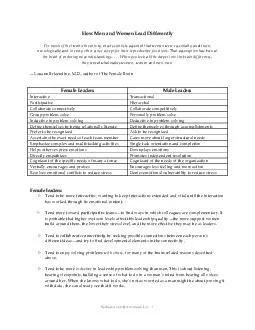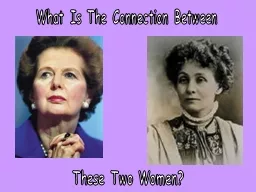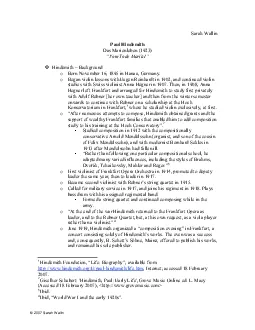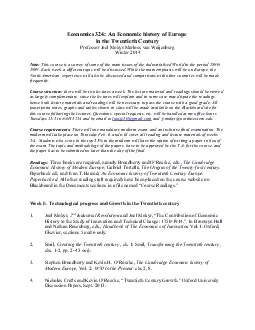PDF-How Men and Women Lead DifferentlyFor much of the twentieth century, m
Author : calandra-battersby | Published Date : 2016-05-28
Female Leaders Male Leaders Interactive Transa ctional Participative Hierarchal Collaborate connectively Collaborate competitively Personally problem solve Inductive
Presentation Embed Code
Download Presentation
Download Presentation The PPT/PDF document "How Men and Women Lead DifferentlyFor mu..." is the property of its rightful owner. Permission is granted to download and print the materials on this website for personal, non-commercial use only, and to display it on your personal computer provided you do not modify the materials and that you retain all copyright notices contained in the materials. By downloading content from our website, you accept the terms of this agreement.
How Men and Women Lead DifferentlyFor much of the twentieth century, m: Transcript
Download Rules Of Document
"How Men and Women Lead DifferentlyFor much of the twentieth century, m"The content belongs to its owner. You may download and print it for personal use, without modification, and keep all copyright notices. By downloading, you agree to these terms.
Related Documents














